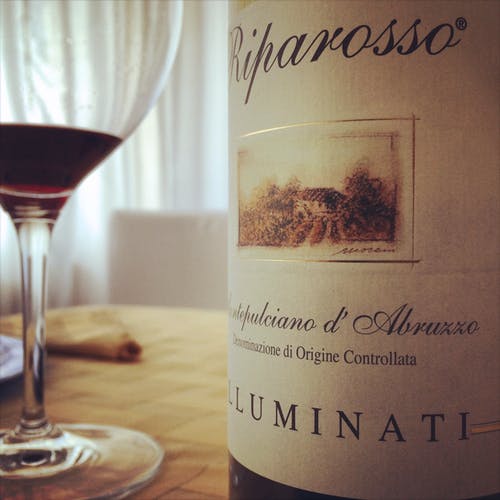
Posted: Feb 21, 2020

Learn the terminology, find awesome new wines you’ll love.
Wine aisles can be a chaotic storm, often confusing happy shoppers and clouding their thoughts with flashy labels and an overload of bottles in one place. A great wine shop, like Edmund’s Oast Exchange in Charleston, South Carolina, makes a world of a difference when it comes to education, as wines are grouped together by region and also by grape varietals.
However, when shopping in supermarkets and larger retail stores where organization and education isn’t top of mind, knowing how to read a label can drastically help you find a wine that’s right for you.“A good back label design can hold a lot of valuable information on the grape(s), blend, fermentation practices, cellaring and chemistry of a wine—feeds the (cork dorks) geeks who love data,” says Adam Sager, Co-President of Winesellers, Ltd. “Producers shouldn’t hide behind the notion that vineyard information is proprietary,” he adds. “Unless a winery is making vast quantities of wine from dozens of growers, stating the vineyard the grapes came from can be a fantastic tool for wine lovers looking to learn more.”
Beyond seeking a red wine, white wine, rosé and bubbles, you can really start to pick and choose bottles based on preferred characteristics. A dry Riesling from Germany; a juicy, meaty Cab from Napa; a plush red, fruity Rioja from Spain—and from there, start relationships with individual winemakers. It’s easy to stick to the tried and true favorites, but there are so many fun bottles out there so… study up with notes from a couple of our knowledgeable wine experts below, have fun, and explore!
What A Wine Label Can Tell You
I always love trying new wines but it can be challenging taking a risk on a new bottle. I totally get it, but thankfully the front and back label hold a bevy of helpful information when it comes to choosing something your palate will enjoy. “The back label will often show sensory characteristics (aroma, taste, and color), winery background information, and sometimes food pairings,” says Sager. “The back labels of the wine bottle are the most effective ways to influence consumer choice besides with the packaging,” he adds. “The producer name is either obvious in large font or in small text at the top or the bottom of the label — it depends on the region and origin of the wine.”
Old World vs. New World
This isn’t just a fancy term that sommeliers toss around but more so a geographic term. Old world wines are wines produced in countries such as France, Spain, Austria, Italy, Portugal, Greece, Hungary, and Germany—countries where winemaking originated from. Old world wines typically have a lengthy history and strict guidelines of how the wine is made. Some of the most standout old world wines are Bordeaux, Champagne, Burgundy, Rioja, and Chianti.
New world wines stem from new world regions like the U.S., New Zealand, South Africa, Australia, Chile, and Argentina—basically everything that’s not considered old world. These include wines like big and bold Napa Cabs, Chardonnay, Shiraz, Zinfandel and Pinot Noir. Tip: new world wines are often fuller bodied and contain higher alcohol content.
What's AVA?
This refers to the American Viticultural Area and, in a nutshell, tells you where grapes come from. “A wine from a larger region is typically a value wine whereas a wine from a specific vineyard site often indicates a higher quality regional designation (i.e. California vs. Santa Lucia Highlands AVA),” says Sager—noting that the more specific the AVA gets the more expensive the bottle. “For example, Zuccardi Valle de Uco Parage Altamira—that’s the Altamira vineyard within the the Uco Valley appellation within Mendoza, Argentina.”
The Trio of Letters on a Label
Stickers or labels with a trio of letters like PDO, DOC, AOP and so on are quality contol restrictions. Each country has its own version. “These can be an indicator of quality but do not guarantee it,” says Chris Tanghe, Master Sommelier and Chief Instructor at GuildSomm.com. In other words don’t get too caught up on these markers. “Recent trends are also bottling under a very generic and loose category for creative freedom in the production process such as Vin de France”—a designation for French table wine.
By Jenn Rice
February 20, 2020
Source and complete article: myrecipes.com
Go-Wine's mission is to organize food and beverage information and make it universally accessible and beneficial. These are the benefits of sharing your article in Go-Wine.com


The Wine Thief Bistro & Specialty Wines is a locally owned small business in downtown Frankfort, IL offering world class wines in a relaxed, casual gathering spot for friends and family. Offering world class virtual tastings and touchless carryout.
https://www.twtwineclub.com/aboutus
Go-Wine 25 Great Wineries in US selection prioritizes quality, value and availability.
www.go-wine.com/great-wineries-in-america
Tasting wine is a nice experience, but visiting the places in which wine is made is a magic moment. Available in New York City for touchless pickup.